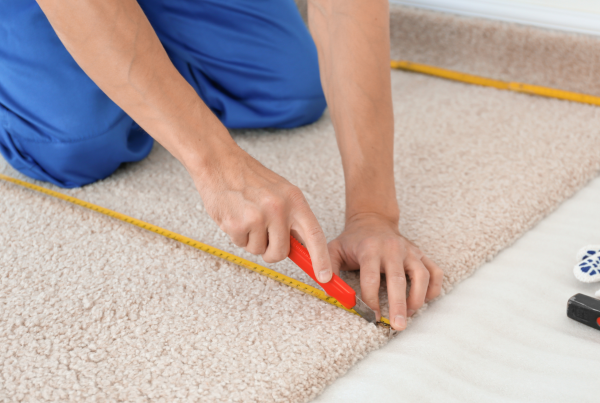If you’ve worked with us before, you may have come across breathwork in your customers reports and email updates. In doing so, you may have wondered how something as basic as breathing, is going to help someone in their recovery.
As a company who prides themselves on using evidence-based practice, we thought it would be fitting to provide the evidence behind why we include breathwork in rehabilitation programs!
The importance of effective breathing
We all know how to breathe. If we didn’t, well, we wouldn’t be here! What many people don’t realise is that we often don’t know how to breathe well. The prevalence of what we call “dysfunctional breathing” is high and a contributing factor to many chronic health conditions (1).
Breathing patterns become dysfunctional through a number of avenues, including muscle tension, lifestyle factors like diet and activity, and psychological factors such as anxiety and stress (5). It’s a vicious cycle. The more we encourage dysfunctional breathing, the harder it is to change; this pattern then further exacerbates the factors above. So on, and so forth.
If we simplify what can be a complicated concept, the crux is that dysfunctional breathing pushes our nervous system further and further into a sympathetic state. Which fortunately, is a concept we are all too familiar with in our work within the rehabilitation space.
Does breathwork really work?
Current literature tells us that breathwork can be beneficial in the rehabilitation of numerous health conditions. Breathing practices alter the autonomic nervous system through physiological responses that decrease sympathetic activity and increase parasympathetic activity (2). These include decreased heart rate and oxygen consumption, decreased blood pressure and increased theta wave activity (2). All of these actions inform the body that we are “safe”, therefore reducing ‘fight or flight’ activity.
In practice, investigations have found breathwork to be particularly useful in mental health, musculoskeletal, cardiac and pain cohorts among many others. A systematic review of breathwork interventions for mental health conditions concluded that it alleviates anxiety, depression, stress, and symptoms of PTSD (3). Cardiac research identifies breathwork as a potential tool to manage heart disease, through managing stress and the associated physiology (6). Very recently, breathwork has been advocated for in the treatment of long-covid and associated breathlessness and anxiety (4). Musculoskeletal rehabilitation and prevention also appears to reap benefits; this is due to the postural and stabilising implications of effective (as well as dysfunctional) breathing patterns (5).
So I guess to answer the above question, yes, breathwork does work!
Strategies for better breathing
When it comes to improving our clients’ health through breathing strategies, there are a range of research-backed options depending on the desired outcome, such as box and 4-7-8 breathing.
However it’s always necessary to start simple by making them aware of a.) their current breathing pattern, and b.) what a more effective breathing pattern feels like.
‘Diaphragmatic’, or ‘Belly’ Breathing is a great place to start. The slow, deep exhale in this practice activates the parasympathetic nervous system, which helps to promote restfulness, recovery and relaxation. Why not try it now!?
-
- You may wish to try this seated, or laying down. Start by placing one hand on your belly, and one hand on your chest.
-
- Inhale on a count of 3-4 seconds, drawing the air deep down into your belly. You should feel your belly rise as it fills with air.
-
- Exhale long and slow (6-8 seconds), as your belly slowly lowers.
-
- Tip – Try to avoid breathing from your chest, use your diaphragm to pull the air down into the belly.
Because breathing is something we do all day everyday, it might seem trivial to include in a rehabilitation program. However, it’s for that same reason it can be so useful. We’ve seen first hand that changing our breathing can have a domino effect on our health; and research agrees.
References:
- Hilz, M. J., & Dütsch, M. (2005). Quantitative studies of autonomic function. Muscle &Amp; Nerve, 33(1), 6–20. https://doi.org/10.1002/mus.20365
- Jerath, R., Edry, J. W., Barnes, V. A., & Jerath, V. (2006, January). Physiology of long pranayamic breathing: Neural respiratory elements may provide a mechanism that explains how slow deep breathing shifts the autonomic nervous system. Medical Hypotheses, 67(3), 566–571. https://doi.org/10.1016/j.mehy.2006.02.042Malviya, S.,
- Meredith, P., Zupan, B., & Kerley, L. (2022, January 22). Identifying alternative mental health interventions: a systematic review of randomized controlled trials of chanting and breathwork. Journal of Spirituality in Mental Health, 24(2), 191–233. https://doi.org/10.1080/19349637.2021.2010631
- Philip, K. E. J., Owles, H., McVey, S., Pagnuco, T., Bruce, K., Brunjes, H., Banya, W., Mollica, J., Lound, A., Zumpe, S., Abrahams, A. M., Padmanaban, V., Hardy, T. H., Lewis, A., Lalvani, A., Elkin, S., & Hopkinson, N. S. (2022, September). An online breathing and wellbeing programme (ENO Breathe) for people with persistent symptoms following COVID-19: a parallel-group, single-blind, randomised controlled trial. The Lancet Respiratory Medicine, 10(9), 851–862. https://doi.org/10.1016/s2213-2600(22)00125-4
- Dc, L. C. (2006, March 3). Rehabilitation of the Spine: A Practitioner’s Manual (Second). LWW.
- Kraus, W., & Keteyian, S. (2010, December 16). Cardiac Rehabilitation (Contemporary Cardiology) (Softcover reprint of hardcover 1st ed. 2007). Humana.
- Mehan, S., & Morris, J. (2018, May 2). A literature review of Breathworks and mindfulness intervention. British Journal of Healthcare Management, 24(5), 235–241. https://doi.org/10.12968/bjhc.2018.24.5.235
Author: Tessa Nielsen
Clinical Exercise Physiologist and Content Creator at Specialised
#exercisephysiology #exerciserehab #rehabilitation #lifeinsurance #incomeprotection #ctp #workcover #mobile #mobileexercisephysiology #fatigue #mentalhealth #cancer #musculoskeletal #injury #pain #physio #physiotherapy #Sydney #Brisbane #Melbourne #Adelaide #Auckland #Waikato #BayofPlenty #Wellington #Otago #Christchurch



